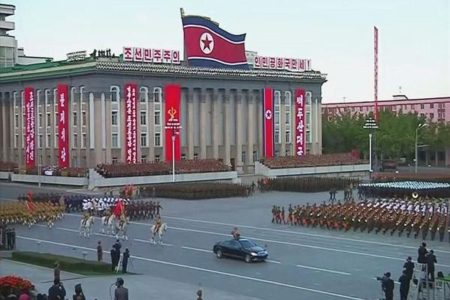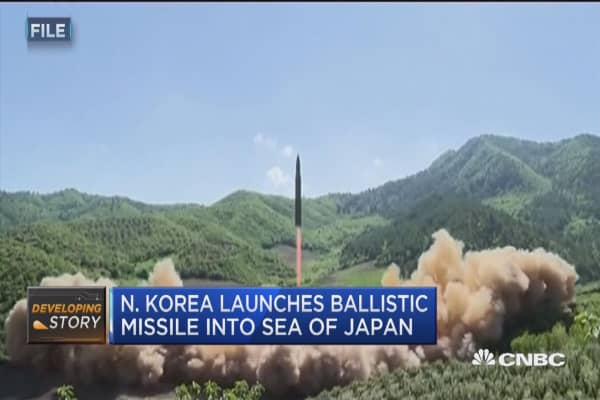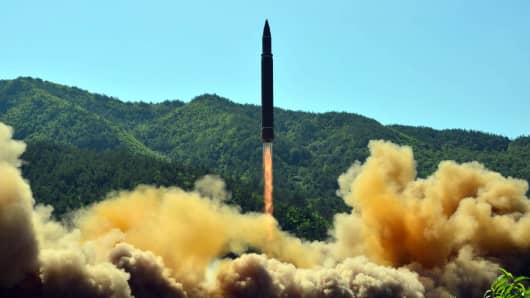
- North Korea on Friday tested an intercontinental ballistic missile, which landed in the Sea of Japan.
- Defense experts say New York City and Boston could now be in range of North Korea’s missile.
- “More of the continental U.S.” is at risk, former CIA Korea branch chief Bruce Klingner said.
North Korea tested an intercontinental ballistic missile Friday, which defense experts say could reach as far as New York or other U.S. East Coast cities.
The most recent test lofted the North Korean missile on a very high trajectory, bringing it down in the Sea of Japan. Preliminary data from the launch reveals that half, if not most, of the continental U.S. would be in range of the missile tested Friday.
“Looks like it pretty much can get to New York, Boston and probably falls just short of Washington,” David Wright, co-director and senior scientist for the Global Security Program at the Union of Concerned Scientists, told CNBC.
The missile flew for 47 minutes, traveled a distance of 1,000 kilometers (about 620 miles) and reached an altitude as high as 3,700 kilometers (nearly 2,300 miles), South Korean military told Reuters.
Wright, a physicist and technical arms control specialist, said the launch appears to show North Korea can “go considerably farther” than previous efforts. He believes this missile on a standard trajectory would have a range of 10,400 kilometers (close to 6,500 miles) before accounting for the rotation of the Earth, which extends the range of missiles fired from west to east.
However, Wright said it’s still unclear if North Korea reduced the payload on this new test to get a longer range than the test on July 4.
“Details are still preliminary, but it does look like the missile flew higher and for a longer duration than than July Fourth launch,” Bruce Klingner, former chief of the Central Intelligence Agency’s Korea branch, told CNBC. “It’s clearly an ICBM, and it would put more of the continental U.S. at risk.”
Klingner, now senior research fellow for Northeast Asia at the Heritage Foundation’s Asian Studies Center, said there were indications last year from knowledge gained about static engine rocket tests by North Korea that the missile might be able to reach the U.S. East Coast eventually.
Kim Jong Un‘s regime is now “two for two” on ICBM missile tests, Klingner said, and the tests “clearly show the range is more capable than some people were giving it credit for.”
“During the call, Dunford and Harris expressed the ironclad commitment to the U.S.-Republic of Korea alliance. The three leaders also discussed military response options,” said Capt. Greg Hicks, a spokesman for Dunford.


